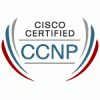Failed 642-812
.......
Struggling through the re-certification process after 2 years of no OJT for the CCNP.
Comments
-
 networker050184
Mod Posts: 11,962 Mod
Sorry to hear it man. I found the BCMSN to be the most difficult NP exam. Probably due to the same reason you have that it really wasn't as interesting to me. Playing with port security is just no fun compared to a nice routing lab IMO. Add to that the fact that I had a lot more prior experience with the BSCI topics.
networker050184
Mod Posts: 11,962 Mod
Sorry to hear it man. I found the BCMSN to be the most difficult NP exam. Probably due to the same reason you have that it really wasn't as interesting to me. Playing with port security is just no fun compared to a nice routing lab IMO. Add to that the fact that I had a lot more prior experience with the BSCI topics.
Good luck on the next attempt!An expert is a man who has made all the mistakes which can be made. -
 peanutnoggin
Member Posts: 1,096 ■■■□□□□□□□
Bummer man!!! Look at the bright side of it... you now know what to expect!!
peanutnoggin
Member Posts: 1,096 ■■■□□□□□□□
Bummer man!!! Look at the bright side of it... you now know what to expect!! Study your weak areas, peruse your strong areas and knock the exam out next week. Best of luck to you... just one more test and you'll have that NP!!! We cannot have a superior democracy with an inferior education system!
Study your weak areas, peruse your strong areas and knock the exam out next week. Best of luck to you... just one more test and you'll have that NP!!! We cannot have a superior democracy with an inferior education system!
-Mayor Cory Booker -
 billscott92787
Member Posts: 933
Look at the bright side. You know what to expect. You can go back and review your materials make improvements and get it on the 2nd try. Look at it this way, next time your posting you'll be saying you are CCNP since this appears to be your last one.
billscott92787
Member Posts: 933
Look at the bright side. You know what to expect. You can go back and review your materials make improvements and get it on the 2nd try. Look at it this way, next time your posting you'll be saying you are CCNP since this appears to be your last one.
Each person is different. I have to say that I thought the BCMSN was difficult. But no where near as difficult as the BSCI. So I guess it is just personal opinion when it boils down to that. I enjoyed the BSCI the most so far. -
 ConstantlyLearning
Member Posts: 445
I'm starting to get fairly sick of the BCMSN material at this stage. Not holding my interest anymore really.
ConstantlyLearning
Member Posts: 445
I'm starting to get fairly sick of the BCMSN material at this stage. Not holding my interest anymore really.
You just have to keep plugging away with the studying man, and now that you've seen the exam, focus on your weak areas!
Good luck."There are 3 types of people in this world, those who can count and those who can't" -
 Nuul
Member Posts: 158
I admit I didn't cover port security well in my studying and it showed with 25% on the Security Topic.
Nuul
Member Posts: 158
I admit I didn't cover port security well in my studying and it showed with 25% on the Security Topic.
There's not too much to cover on it, port security is pretty straight forward. I think they include the trusts under that category. They hit me pretty hard on that. For example, you have a Cisco phone attached to port X. The config looks like Y. Where is the trust boundary?
STP is a broader topic than I think most people realize for this exam. I was questioned very heavily on it. I'd go as far to say that was the single biggest topic they covered. If you know what all the key topics like root guard, bdu guard, UDLD, etc. do forwards and backwards you'll be fine.I covered STP well, but still got a dismal 30%.
Keep your head up, you'll get it next time. At least now you know what to expect
-
 jeanathan
Member Posts: 163
I've got the trust boundaries down pat. It is the Layer 2 attack types and dot1x authentication and BPDU root guard, Uplinkfast/backbonefast stuff I am having trouble with (lack of motivation to study and understand it).
jeanathan
Member Posts: 163
I've got the trust boundaries down pat. It is the Layer 2 attack types and dot1x authentication and BPDU root guard, Uplinkfast/backbonefast stuff I am having trouble with (lack of motivation to study and understand it).
I also need to work on syslog and vlan/stp design best practices. Maybe my next test will stick to core technologies more and I won't need to rely on knowledge about some of these vaguely covered things in the book.
That being said, if my test would have had 10 Sims and all HSRP, STP, VTP, WLAN, Voice, and CEF questions on the test I probably would have scored over 900. But like everyone has mentioned now I know what to expect and can be sure to take it down next time.Struggling through the re-certification process after 2 years of no OJT for the CCNP. -
 notgoing2fail
Member Posts: 1,138
trust boundaries? holy cow, I've been studying for weeks now and that's the first I've heard of it. LOL!!!
notgoing2fail
Member Posts: 1,138
trust boundaries? holy cow, I've been studying for weeks now and that's the first I've heard of it. LOL!!!
ok ok, maybe I did hear about it but I didn't jot it down in my notes...
darn!!!! -
 qplayed
Member Posts: 303
With a 720. I thought I did alot better than my score. I admit I didn't cover port security well in my studying and it showed with 25% on the Security Topic. I covered and know STP well, but still got a dismal 30%. It was as tough an exam as the BSCI, only I enjoyed the BSCI. I don't like this pseudo wireless voice stuff, just stick to switching.
qplayed
Member Posts: 303
With a 720. I thought I did alot better than my score. I admit I didn't cover port security well in my studying and it showed with 25% on the Security Topic. I covered and know STP well, but still got a dismal 30%. It was as tough an exam as the BSCI, only I enjoyed the BSCI. I don't like this pseudo wireless voice stuff, just stick to switching.
Oh well maybe next week I'll at least beat 720.
w/o breaking NDA what topics would you say you were hit the most on? I was supposed to take the exam today at 6pm but something told me to push it back
I even skipped work to work on labs and do more review If you cannot express in a sentence or two what
If you cannot express in a sentence or two what
you intend to get across, then it is not focused
well enough.
—Charles Osgood, TV commentator -
 jeanathan
Member Posts: 163
w/o breaking NDA what topics would you say you were hit the most on? I was supposed to take the exam today at 6pm but something told me to push it back
jeanathan
Member Posts: 163
w/o breaking NDA what topics would you say you were hit the most on? I was supposed to take the exam today at 6pm but something told me to push it back
I even skipped work to work on labs and do more review
I can't say what was on the exam or hint about it. NDA. I can say that you must know things from all knowledge domains so don't take it if you have just skimmed a section like I did.
I have been studying today and learned some new things... (hint:if I failed and I am doing this make sure you know it too).
I just finished doing a lab on my 3550's where I was manipulating spanning-tree root, designated, and blocking ports with Per vlan spanning-tree. I am using the config-int#spanning-tree vlan 1 cost x and config-int#)spanning-tree vlan 1 port-priority x commands to manipulate what ports are root ports and which are blocking for certain vlans.
It is neat because I have vlan 1,5,10 and using the cost command on the downstream (from root) switch I can tell it to use my fa0/1 as the root port for vlan 1 (spanning-tree vlan 1 cost 18 (19 is default) and use fa0/2 for the root port of vlan 5,10. This way I can load balance my vlans across the physical loops in the network.
Keep in mind that you use cost to manipulate from a downstream switch (lower in hierarchy from root switch) to specify which port is root (path to root bridge). Use port-priority from an upstream switch (closer to root or root) to create a lower priority number on an interface which causes it to advertise lower (superior) BPDU's to downstream switches (lower in the hierarchy than the switch you are working on).
I am going to work on the attack types at layer 2 and port security heavy before taking it again.
I am looking at an HSRP lab on the 3kfitties with manipulation of priority values and decrement values (interface tracking) and load balancing vlans by using multiple HSRP groups. I'll do that tomorrow.Struggling through the re-certification process after 2 years of no OJT for the CCNP. -
 qplayed
Member Posts: 303
thanks, any info w/o breaking nda is fine with me. gl I'm taking it fridayIf you cannot express in a sentence or two what
qplayed
Member Posts: 303
thanks, any info w/o breaking nda is fine with me. gl I'm taking it fridayIf you cannot express in a sentence or two what
you intend to get across, then it is not focused
well enough.
—Charles Osgood, TV commentator -
 Nuul
Member Posts: 158
I have been studying today and learned some new things...
Nuul
Member Posts: 158
I have been studying today and learned some new things...
I just finished doing a lab on my 3550's where I was manipulating spanning-tree root, designated, and blocking ports with Per vlan spanning-tree. I am using the config-int#spanning-tree vlan 1 cost x and config-int#)spanning-tree vlan 1 port-priority x commands to manipulate what ports are root ports and which are blocking for certain vlans.
It is neat because I have vlan 1,5,10 and using the cost command on the downstream (from root) switch I can tell it to use my fa0/1 as the root port for vlan 1 (spanning-tree vlan 1 cost 18 (19 is default) and use fa0/2 for the root port of vlan 5,10. This way I can load balance my vlans across the physical loops in the network.
Keep in mind that you use cost to manipulate from a downstream switch (lower in hierarchy from root switch) to specify which port is root (path to root bridge). Use port-priority from an upstream switch (closer to root or root) to create a lower priority number on an interface which causes it to advertise lower (superior) BPDU's to downstream switches (lower in the hierarchy than the switch you are working on).
Quite a useful lab. It's very nice for illustrating how you could influence STP decisions for multiple switches from a single switch. Rather nice when you don't have enable mode on the other switches. -
 APA
Member Posts: 959
Head up and tackle that big boy again...... You can do it!
APA
Member Posts: 959
Head up and tackle that big boy again...... You can do it!
I do admit that BCMSN and BCSI have broad range of subjects to cover.... but its worth taking the time to learn them all quite well...
No point passing the exam and forgetting everything the minute you walk out the door.
CCNA | CCNA:Security | CCNP | CCIP
JNCIA:JUNOS | JNCIA:EX | JNCIS:ENT | JNCIS:SEC
JNCIS:SP | JNCIP:SP -
 jeanathan
Member Posts: 163
Head up and tackle that big boy again...... You can do it!
jeanathan
Member Posts: 163
Head up and tackle that big boy again...... You can do it!
I do admit that BCMSN and BCSI have broad range of subjects to cover.... but its worth taking the time to learn them all quite well...
No point passing the exam and forgetting everything the minute you walk out the door.
I know, I am just so excited that my 4 month journey is about to come to fruition Struggling through the re-certification process after 2 years of no OJT for the CCNP.
Struggling through the re-certification process after 2 years of no OJT for the CCNP.












